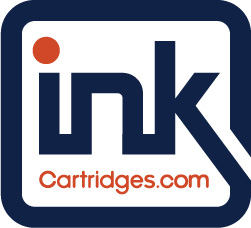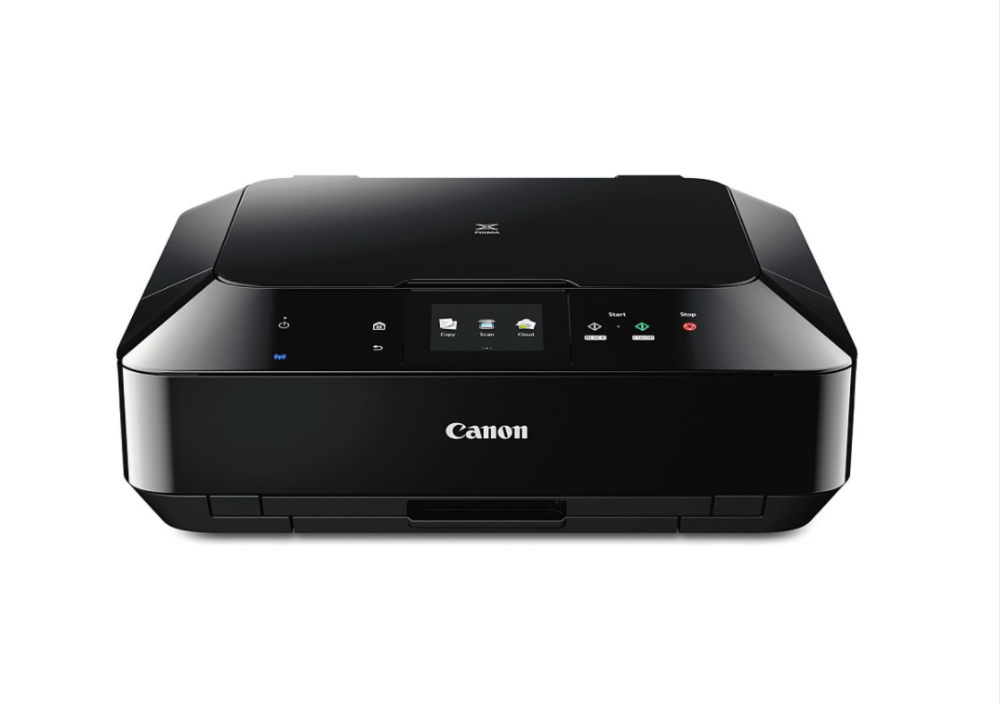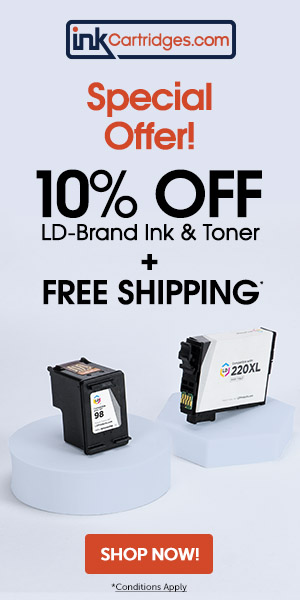There’s no doubt that inkjet printers are the ideal choice for those looking to print clear, vibrant images. All printer manufacturers have top tier photo printers but with the amount of options in today’s market, which ones are truly worth spending money on? Not all photo inkjet printers are created equal. With this guide, we hope to clearly define what features to look for so that you can be sure to invest your money on the right one.
Number of Cartridges
Some inkjet printers have more cartridges than others. If you’re very particular about how vibrant your photos are up close and if you’re looking to print photos with wider tonal variation, don’t get anything less than a 6-cartridge inkjet printer. Though you can still expect good quality photos from a 4-cartridge printer, the superiority of photos printed with a 6-cartridge printer is very pronounced to the trained eye.
If You’re Printing Black and White Photos: So you like life in monochrome. This means you should be looking for a printer that can properly print a good range of gray tones onto paper. For the black and white photographer, pay special attention to the number of black and gray cartridges an inkjet printer has. For example, the Canon PIXMA Pro-1 has 3 gray (dark gray, gray, light gray) and 2 black (photo black and matte black) cartridges and is known to deliver stunning black and white prints with no color casts and dynamic grayscale. On the other hand, the Canon PIXMA Pro-100 which only has gray, light gray, and black cartridges require a lot of tinkering with print settings before you can hopefully achieve a true black and white photo.
If You’re Printing Colored Photos: The more cartridges your printer has, the more tonal variety your photos can possess. A 12-cartridge printer will most likely have deeper, richer color tones and better shadow details than a 6-cartridge printer. Using our previous example, let’s compare the cartridges used by the two printers:
| Cartridges | Canon PIXMA Pro-100 | Canon PIXMA Pro-1 |
|---|---|---|
| Cyan | Cyan Ink | Cyan Ink |
| Photo Cyan Ink | Photo Cyan Ink | |
| Magenta | Magenta Ink | Magenta Ink |
| Photo Magenta Ink | Photo Magenta Ink | |
| Red Ink | ||
| Yellow | Yellow Ink | Yellow Ink |
| Black | Black Ink | Photo Black Ink |
| Light Gray Ink | Matte Black Ink | |
| Gray Ink | Dark Gray Ink | |
| Gray Ink | ||
| Light Gray Ink | ||
| Chroma Optimizer |
Just by looking at the cartridges, you can already tell that prints from the PIXMA Pro-1 will look more detailed than those from the Pro-100.
Tricolor or Individual Color Cartridges
If you’re in the market for a budget photo printer for printing personal family photos, something to ask yourself is: Do you get an inkjet printer with two cartridges (one black and one tricolor cartridge) OR four (one for each color)? What’s the difference? The downside to using tricolor cartridges (one cartridge that contains all cyan, magenta, and yellow) is that 1. it contains lesser ink, and 2. you need to replace the entire cartridge even if only one color is low. So if you don’t want to deal with these scenarios, get a printer that has a cartridge for each color.
Ink Type
Inkjet printers use either dye-based ink or pigment-based ink. Let’s go over a quick run through of how these ink types differ from one another.
Dye-Based Ink:
As copied from our Paper and Ink Combinations: Part 2 article:
Dye-based ink is made from coloration that is dissolved in a liquid, usually either water or glycol. This helps the dye flow easily from the printer head to the page (and dry quickly once it’s there). Dye-based inks are super sharp for text and create rich, vibrant colors in your images. Most standard inkjet printers you will encounter feature dye-based inks. Dye-based inks are not waterproof and tend to fade in 5-25 years.
To summarize, photos printed with dye ink are more colorful but are not waterproof and can fade faster than photos printed with pigment.
Pigment-Based Ink:
Also according to our Paper and Ink Combinations: Part 2 article:
Pigmented ink is designed to create long lasting photo-quality color for professionals. Pigment ink sets often come in a wider range of tones than a standard dye-based ink set, in part because they are specialized for use with different kinds of paper. They offer more versatility to professional photographers to improve color depth, sharpness, and tone by using different ink and paper combinations—though many manufacturers of both ink and paper will design their products with an intended combination in mind.
Apart from the difference in print quality, photographers prefer pigment printed photos because they are fade- and water-resistant. A caveat with printers that use pigment inks (as well as the cartridges themselves) is that they’re more expensive. For both ink types, the ultimate quality of results your printer produces will also depend on the paper used.
Paper Media Types and Sizes Accepted
All inkjet printers accept standard printing sizes 8.5″ x 14″ and under but if you’re looking to print something like a 12″ x 18″ poster, you might need to look at wide format inkjet printer options. For example, the Canon PIXMA Pro-1 can print photos up to 13″ x 19″ while the Canon PIXMA MG3620 can print only up to 8.5″ x 11.7″. Apart from media size, inkjet printers also differ in the kinds of paper types they accept. The usual paper types accepted are copy paper, photo paper, matte paper, glossy paper, and card stock. But if you need a printer that can handle other types of art paper, be aware that not all inkjet printers can accommodate all media. To illustrate, the Epson R3000 wide format printer can print on fine art or textured paper but the Canon PIXMA iP8720 certainly can’t. Some photo inkjet printers take a wider range of paper types while some might not, so make sure to check the specs before diving in.
Max Resolution
Inkjet printers commonly have a resolution of 1200 x 1800. For normal family photos, this resolution is acceptable. For professional photographers looking to print images of exhibit standards, this resolution simply won’t cut it. Check out the list below so you can see how print resolutions differ by printer:
| Printer | Print Resolution |
|---|---|
| Epson R3000 | 5760 x 1440 dpi |
| Canon PIXMA Pro-1 | 4800 x 2400 dpi |
| HP Envy 5660 | 4800 x 1200 dpi |
| Canon imagePROGRAF Pro-1000 | 2400 x 1200 dpi |
| Epson SureColor P600 | 5760 x 1440 dpi |
| Canon MX922 | 9600 x 2400 dpi |
Portable / Mobile
Here’s a list of portable printers that can be carried around for printing photos.
Canon Selphy CP1200 Wireless Compact Photo Printer – Capture and print photos while on the go with Canon’s wireless compact photo printer. Print out 4″ x 6″ photos or smaller in 47 seconds with this dye sublimation printer. You can print card size or square 2″ x 2″ photos as well.
Canon PIXMA iP110 Wireless Mobile Printer – This printer has an outstanding print resolution of 9600 x 2400 max dpi with a print speed of 9 images per minute for black and white and 5.8 images per minute for color. You can print 4 x 6 or 5 x 7 photos, or letter and legal-sized documents as well as #10 envelopes.
Epson PictureMate PM-400 Personal Photo Lab – Print photos straight from your phone with this Epson PictureMate PM-400. Get images printed in resolutions as high as 5760 x 1440 dpi. Uses dye based ink. Prints 4″ x 6″ photos in 36 seconds.
Budget Photo Printer
If you’re looking for an photo inkjet printer to print family photos, a good printer may not be the cheapest but it won’t cost you an arm and a leg. Here are some suggested printer units we have for those looking for decent quality prints without the professionally expensive price tag.
Epson WorkForce XP-430 Small in-One-Printer – Get more bang for your buck with this multi-function inkjet photo printer from Epson. This printer uses Epson’s MicroPiezo inkjet technology which provides you with max print resolutions of 5760 x 1440 optimized dpi–in a nutshell, stellar sharp photos! Considering this printer uses pigment ink, this machine is definitely a bargain since printers with pigment ink are usually pricey. Comes with individual color cartridges so you only replace the color you need.
HP Envy Photo 7855 Printer – See stellar photo printouts with this all-in-one printer powered by HP’s thermal inkjet technology that can print 15 black/white pages per minute (ppm) or 10 colored ppm. You can get print resolutions of 1200 x 1200 dpi in black and white and 4800 x 1200 dpi in color.
HP Envy 5660 Printer – A slightly more affordable alternative to the Envy Photo 7855 is the Envy 5660. Both HP printers uses one black and one tricolor cartridge instead of having one cartridge for cyan, yellow, and magenta. You can get max print resolutions of 1200″ x 600″ dpi for monochrome images and up to 4800″ x 1200″ dpi for colored images. Prints photos as large as a legal size document.
Professional Photo Inkjet Printers
Canon PIXMA Pro Series – Canon has three top of the line photo inkjet printers from the PIXMA series worth looking into if you’re looking to print professional images. We hope to clearly differentiate each one to help you decide which one’s a better fit for your needs.
| Printer | Canon PIXMA Pro-100 | Canon PIXMA Pro-10 | Canon PIXMA Pro-1 |
|---|---|---|---|
| Ink Type | Dye-based Ink | Pigment Ink (LUCIA) | Pigment Ink (LUCIA) |
| Number of Cartridges | 8 total cartridges (CLI-42) | 10 total cartridges (PGI-27) | 12 total cartridges (PGI-29) |
| Number of Blacks | 3 Blacks | 3 Blacks | 5 Blacks |
| Max Print Resolution | Up to 4800 x 2400 dpi (color or black and white) | Up to 4800 x 2400 dpi (color or black and white) | Up to 4800 x 2400 dpi (color or black and white) |
| Max Print Size | 13″ x 19″ | 13″ x 19″ | 13″ x 19″ |
| Print Speed | 51 seconds for an 8″ x 10″ Image 1 minute 30 seconds for 11″ x 14″ Image |
3 minutes 35 seconds for 8″ x 10″ Image 5 minutes 20 seconds for 11″ x 14″ Image |
2 minutes 10 seconds 8″ x 10″ (Color) 2 minutes 55 seconds 11″ x 14″ (Color & Grayscale) |
| Paper Types Accepted | Plain Paper Glossy, Semi-Gloss, and Super High Gloss Photo Paper Matte Photo Paper Fine Art Paper Printable CD/DVD/Blu-Ray Discs |
Plain Paper Glossy, Semi-Gloss, and Super High Gloss Photo Paper Matte Photo Paper Fine Art Paper Printable CD/DVD/Blu-Ray Discs |
Photo Paper Pro Platinum Photo Paper Plus SemiglossPhoto Paper Plus Glossy Matte Photo Paper Fine Art paper |
Most photographers prefer the PIXMA Pro-10 since it’s better than the PIXMA Pro-100, uses pigment ink cartridges, but is not as expensive as the PIXMA Pro-1.
Canon PIXMA iP8720 – Another Canon contender when it comes to professional photo printing is the PIXMA iP8720. It boasts of a 9600 x 2400 maximum color dpi so you can expect nothing less but detailed prints. It comes with 1 pigment black, 2 dye blacks, and 3 dye based color cartridges (6 cartridges total). Prints up to 13″ x 19″ images.
Epson R3000 vs Epson Artisal 1430 – Shifting our focus to professional Epson photo printers, there are two that stand out: The Epson R3000 and the Epson Artisan 1430. Let’s do a side-by-side comparison as well so you can better compare their features.
| Printer | Epson Stylus Photo R3000 | Epson Artisan 1430 |
|---|---|---|
| Ink Type | Pigment Ink (UltraChrome K3) | Dye Ink (Claria) |
| Number of Cartridges | 9 total cartridges (Epson 157) | 6 total cartridges (Epson 79) |
| Number of Blacks | 4 Blacks | 3 Blacks |
| Max Print Resolution | 5760 x 1440 dpi (color or black and white) | 5760 x 1440 optimized dpi |
| Max Print Size | 13″ x 19″ | 13″ x 19″ |
| Print Speed | Up to 1.5 minutes for an 8″ x 10″ photo Up to 2.5 minutes for a 13″ x 19″ photo |
Up to 2.8 images per minute (black or color) |
| Paper Types Accepted | Plain Paper Glossy, Semi-Gloss, and High Gloss Photo Paper Matte Photo Paper Fine Art Paper (Velvet or Watercolor Paper Textured Rolls of Exhibition Canvas or Canvas Satin |
Plain paper Glossy, semi-gloss, and matte paper Semi-gloss and glossy photo paper Watercolor paper DVD discs and CD discs |
Overall, the staggering difference in price make sense when you see how much color intensity you can get simply based on the number of blacks and total cartridges the Stylus Photo R3000 uses. Then again, it boils down to the photos you’ll be printing. Whether you’ll need that color depth or not, is up to you.
Wide Format Photo Printers
Last but not least, it’s time to bring out the big guns. If you’re looking to display your work on a grander scale, here are some printers to consider.
Epson SureColor P600 Wide Format Inkjet Printer – This printer comes with 9 pigment UltraChrome ink cartridges and a maximum printable width of 13″ x 129″. Prints images that can last up to 200 years for color and 400 years for black and white. Automatically switches between matte black and photo black depending on print medium.
Canon imagePROGRAF PRO-1000 – This wide-format printer is a photographer’s dream rated 4.8 out of 5 stars on the Canon website. It has 11-color pigment cartridges (4 of which are black) which guarantees a wide color gamut as well as enhanced darker shadow areas you’ll certainly enjoy. With a 1.28″ wide printhead, you can print large photos faster. Print on paper sizes up to 17″ x 22″.
Shopping for the right printer may involve a lot of factors, regardless if it’s a laser printer for documents or a photo inkjet printer for photography, but the most important one of all is how well it caters to your needs. A printer that works for someone won’t always work for everybody else. A black and white photographer might prefer a different unit from a landscape photographer. There is simply no set rule. But if you start the search knowing exactly what your printing needs are, finding the right fit from a vast array of photo printers should be fairly easy.
If you’ve used a photo inkjet printer worth adding to the list, do let us know in the comments section below!




